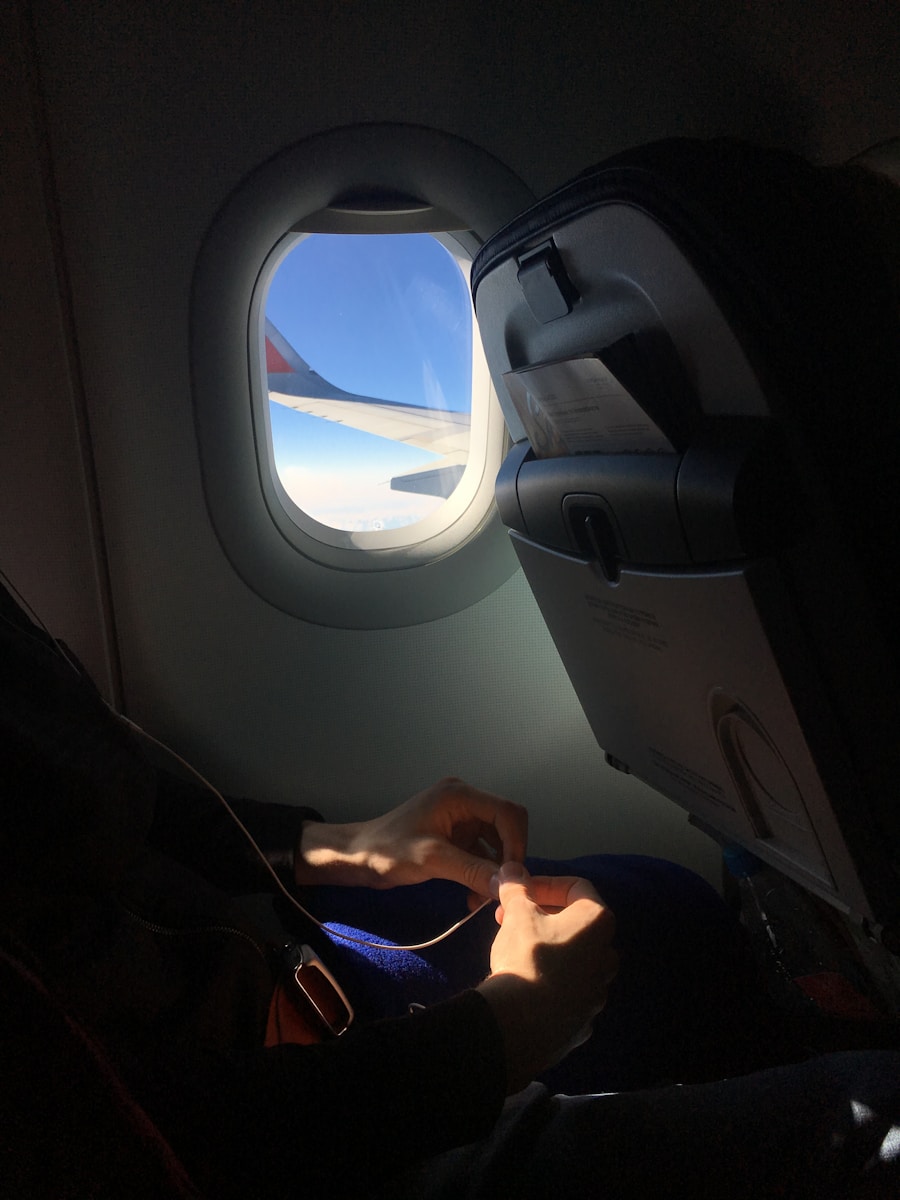Traveling with hiking sticks can be a bit of a challenge due to the regulations set forth by the Transportation Security Administration (TSA). The TSA has specific guidelines regarding what items are permissible in carry-on luggage and checked baggage. Hiking sticks, often made of materials like aluminum, carbon fiber, or wood, can be classified as potential weapons due to their length and rigidity.
As a result, travelers must be aware of the nuances in TSA regulations to avoid any complications at security checkpoints. According to TSA guidelines, hiking sticks are generally allowed in checked baggage but may face restrictions when it comes to carry-on luggage. The key factor is the length and design of the stick.
For instance, collapsible or folding hiking sticks may be more acceptable in carry-on bags, as they can be compacted to fit within the size limits set by airlines. However, rigid or longer sticks may be flagged by security personnel, leading to potential delays or confiscation. It is crucial for travelers to familiarize themselves with both TSA regulations and the specific policies of their airline to ensure a smooth travel experience.
Key Takeaways
- TSA regulations for hiking sticks may vary, so it’s important to check the specific guidelines for the airport you are traveling through.
- When choosing a hiking stick, consider the material, weight, and grip to ensure it is comfortable and suitable for your needs.
- Properly pack and store your hiking stick to prevent damage and ensure it meets airline regulations for carry-on or checked baggage.
- Consider the pros and cons of checking vs. carrying on your hiking stick, taking into account the potential for damage and additional fees.
- When traveling internationally, be aware of any additional regulations or restrictions on hiking sticks in your destination country.
Choosing the Right Hiking Stick
Selecting the right hiking stick is essential for both comfort and functionality during outdoor adventures. There are various types of hiking sticks available on the market, each designed for different terrains and user preferences. When choosing a hiking stick, factors such as material, weight, adjustability, and grip should be taken into consideration.
For example, aluminum sticks are known for their durability and strength, making them suitable for rugged terrains, while carbon fiber sticks are lighter and provide excellent shock absorption, ideal for long-distance hikes. Another important aspect to consider is the adjustability of the hiking stick. Many modern hiking sticks come with adjustable lengths, allowing users to customize the height according to their needs.
This feature is particularly beneficial when traversing varying elevations or when multiple users share the same stick. Additionally, the grip of the hiking stick plays a significant role in user comfort. Ergonomic grips made from materials like cork or foam can reduce hand fatigue during extended hikes, making them a worthwhile investment for avid hikers.
Packing and Storing Hiking Sticks

Proper packing and storage of hiking sticks are crucial for maintaining their integrity and ensuring they remain functional during travel. When preparing for a trip, it is advisable to disassemble or collapse the hiking sticks if they are designed to do so. This not only makes them easier to pack but also minimizes the risk of damage during transit.
Many travelers opt to place their hiking sticks in protective sleeves or cases to prevent scratches and dents while stored in luggage. When it comes to storing hiking sticks at home or in a vehicle, it is essential to keep them in a dry environment to prevent moisture-related issues such as rust or mold. For those who frequently hike in wet conditions, it may be beneficial to periodically inspect the sticks for any signs of wear or damage.
Additionally, storing hiking sticks upright or hanging them can help maintain their shape and prevent bending over time. Proper care and storage practices can significantly extend the lifespan of hiking sticks, ensuring they are always ready for the next adventure.
Deciding whether to check hiking sticks or carry them on can significantly impact a traveler’s experience at the airport. Checking hiking sticks can alleviate concerns about security regulations but may introduce other challenges such as potential damage or loss during transit. On the other hand, carrying them on can provide peace of mind regarding their safety but may lead to complications at security checkpoints if they do not meet size requirements.
When opting to check hiking sticks, travelers should ensure they are securely packed in a sturdy suitcase or travel bag. Utilizing padding materials such as bubble wrap or clothing can help protect them from impacts during handling. Conversely, if choosing to carry them on, it is advisable to select collapsible models that can easily fit into overhead compartments or under seats.
Understanding the airline’s specific policies regarding carry-on items is crucial; some airlines may have stricter regulations than others regarding the dimensions and types of items allowed in the cabin.
International Travel Considerations
| Country | Entry Requirements | Quarantine | COVID-19 Testing |
|---|---|---|---|
| United States | Proof of vaccination or negative test | Varies by state | Required for unvaccinated travelers |
| United Kingdom | Proof of vaccination or negative test | 10-day quarantine for unvaccinated travelers | Required for all travelers |
| Canada | Proof of vaccination and negative test | 14-day quarantine for unvaccinated travelers | Required for all travelers |
Traveling internationally with hiking sticks introduces additional considerations beyond TSA regulations and airline policies. Different countries have varying rules regarding what items can be brought into their borders, and some may have restrictions on outdoor equipment like hiking sticks. It is essential for travelers to research the regulations of their destination country well in advance of their trip.
For instance, certain countries may require travelers to declare outdoor equipment upon entry or may have specific guidelines regarding the materials used in hiking gear. Additionally, customs regulations may differ significantly from those in the United States, leading to potential complications if hikers are not adequately prepared. Travelers should also consider language barriers when communicating with customs officials; having documentation that outlines the purpose of the hiking sticks can be beneficial in clarifying any misunderstandings.
Communicating with Airport Security
Approaching Security Checkpoints with Confidence
When presenting hiking sticks at security, it is helpful to explain that they are intended for outdoor activities rather than self-defense or aggressive use. This clarity can help alleviate concerns from security personnel.
Demonstrating the Hiking Sticks
If possible, demonstrating how the sticks collapse or disassemble can further alleviate concerns from security personnel. This can help show that the sticks are not a threat and are simply a tool for outdoor activities.
Having Documentation Ready
Additionally, having receipts or information readily available can assist in clarifying any doubts about the legitimacy of the equipment being carried. This can help to quickly resolve any issues and allow travelers to continue with their journey.
Tips for Smooth Travel with Hiking Sticks

To ensure a hassle-free travel experience with hiking sticks, several practical tips can be employed. First and foremost, planning ahead is crucial; understanding both TSA regulations and airline policies will help avoid unexpected surprises at security checkpoints. Travelers should also consider arriving at the airport earlier than usual to allow ample time for security screening.
Another useful tip is to label hiking sticks with personal identification information. In case they are lost or misplaced during travel, having contact details attached can increase the chances of recovery. Additionally, utilizing travel insurance that covers lost or damaged equipment can provide peace of mind for those who invest significantly in high-quality hiking gear.
Alternative Options for Hiking on Vacation
For those who encounter challenges traveling with hiking sticks or prefer not to bring their own, there are alternative options available for enjoying outdoor activities while on vacation. Many popular hiking destinations offer rental services for outdoor gear, including hiking sticks. This option allows travelers to access quality equipment without the burden of transporting it from home.
Additionally, guided hiking tours often provide necessary gear as part of their packages. These tours not only eliminate the need for personal equipment but also offer expert guidance on local trails and safety tips tailored to specific environments. For those who prefer a more spontaneous approach, local outdoor shops frequently sell affordable hiking gear that can be used during a trip and later donated or gifted after returning home.
In conclusion, navigating travel with hiking sticks requires careful consideration of regulations, proper packing techniques, and effective communication with airport security personnel. By understanding these aspects and exploring alternative options for outdoor activities while on vacation, travelers can enjoy their adventures without unnecessary stress or complications.
If you are planning a hiking trip and wondering if you can take hiking sticks on a plane, you may also be interested in reading about exploring Ireland with car-free travel tips. This article provides valuable information on how to navigate Ireland’s beautiful landscapes without the need for a car, making it a great resource for eco-conscious travelers or those looking for a unique travel experience.
FAQs
Can you take hiking sticks on a plane?
Yes, you can take hiking sticks on a plane as part of your checked or carry-on luggage.
Are there any restrictions on taking hiking sticks on a plane?
There are no specific restrictions on taking hiking sticks on a plane, but it’s always best to check with your airline for any specific guidelines or restrictions.
How should I pack my hiking sticks for a flight?
If you are packing your hiking sticks in your checked luggage, it’s best to secure them with padding to prevent damage. If you are carrying them on the plane, make sure they meet the airline’s carry-on size restrictions and are properly secured.
Are there any specific rules for carrying hiking sticks on international flights?
When traveling internationally, it’s important to check the specific rules and regulations of the country you are traveling to, as they may have different guidelines for carrying hiking sticks on a plane.
Can I bring collapsible hiking sticks on a plane?
Yes, collapsible hiking sticks are generally allowed on planes, but it’s always best to check with your airline for any specific guidelines or restrictions.
